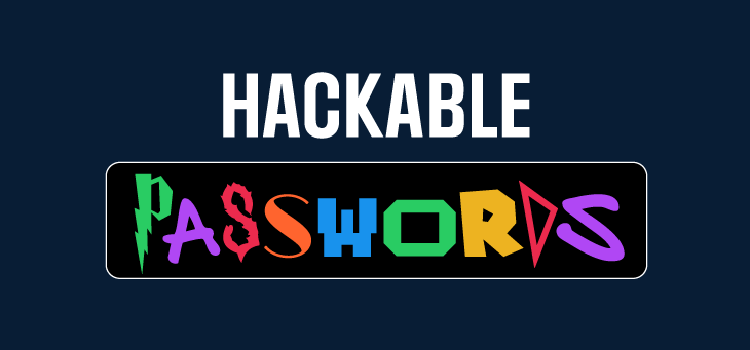Mission Statement
The Information Security Office is committed to lowering the risk profile of the University’s electronic information by implementing industry best practices to protect the confidentiality, integrity, and availability of student, faculty, and staff information. We uphold the University’s compliance obligations by developing information security policies, providing security awareness training, and overseeing the implementation of strategic information security initiatives.
Scam of the Week
This Phishing Scam Is a Bad Apple
In this week’s scam, you receive text messages that say someone is trying to log in to your Apple account without your permission. Then, you get a call from someone claiming to be an Apple support agent. They tell you that your account has been compromised and that they have opened a support ticket for you so they can help you secure your account. You even receive an actual email from Apple support that contains your case number.
The Apple support email you received is genuine, but the support ticket was initiated for you by cybercriminals, not by Apple. They’ll pretend to help “fix” the issue with your account and ask you to give them your security code so that they can close your support ticket. However, if you give them the code, they can steal your Apple account!
Follow these tips to avoid falling victim to a phishing scam:
- If you receive unexpected text messages from Apple, don’t reply or select any links in the message. Instead, visit the Apple website to confirm that the message is legitimate, or call their official customer support line.
- Cybercriminals often try to trick you into acting impulsively by creating a sense of urgency. Always be cautious if you receive a text message that instructs you to act quickly!
- Remember, real support agents will not ask you for your passcode or password. Scammers request this information so that they can gain access to your accounts.
Time It Takes a Hacker to Brute Force Your Password in 2023
| Number of Characters | Number Only | Lowercase Letters | Upper and Lower Case Letters | Numbers, Upper and Lowercase Letters | Numbers, Upper and Lowercase Letters, Symbols |
|---|---|---|---|---|---|
| 4 | Instantly | Instantly | Instantly | Instantly | Instantly |
| 5 | Instantly | Instantly | Instantly | Instantly | Instantly |
| 6 | Instantly | Instantly | Instantly | Instantly | Instantly |
| 7 | Instantly | Instantly | Instantly | Instantly | Instantly |
| 8 | Instantly | Instantly | Instantly | Instantly | 1 sec |
| 9 | Instantly | Instantly | 4 secs | 21 secs | 1 min |
| 10 | Instantly | Instantly | 4 mins | 22 mins | 1 hour |
| 11 | Instantly | 6 secs | 3 hours | 22 hours | 4 days |
| 12 | Instantly | 2 mins | 7 days | 2 months | 8 months |
| 13 | Instantly | 1 hour | 12 months | 10 years | 47 years |
| 14 | Instantly | 1 day | 52 years | 608 years | 3k years |
| 15 | 2 secs | 4 weeks | 2k years | 37k years | 232k years |
| 16 | 15 secs | 2 years | 140k years | 2m years | 16m years |
| 17 | 3 mins | 56 years | 7m years | 144m years | 1bn years |
| 18 | 26 mins | 1k years | 378m years | 8bn years | 79bn years |
 QR Code Phishing - 'Quishing'
QR Code Phishing - 'Quishing'
 Phishing Click Rates Triple in 2024
Phishing Click Rates Triple in 2024
 The Most Dangerous Pop Culture Passwords in 2024
The Most Dangerous Pop Culture Passwords in 2024
Cyber Security Alerts
What is being exploited?
Vulnerability in Windows CryptoAPI that allows malicious executables using a spoofed
code-signing certificate to appear as if it was from a trusted source.
What does this affect?
Attackers can conduct man-in-the-middle attacks and decrypt confidential information
on user connections to spoofed software that appears legitimate.
Which Operating Systems does this affect?
Windows 10, Windows Server 2016, and Windows Server 2019
How to mitigate this?
Apply critical patches to affected systems as soon as possible.
For more information:
CVE-2020-0601
What is being exploited?
Vulnerability in Windows Remote Desktop Gateway (RD Gateway) that allows specially
crafted requests to execute arbitrary code on the target system.
What does this affect?
Attackers can gain access to the target system with full user rights that would allow
them to install programs; view, change, or delete data; or create new users.
Which Operating Systems does this affect?
Windows Server 2012, Windows Server 2016, and Windows Server 2019
How to mitigate this?
Apply critical patches to affected systems as soon as possible.
For more information:
CVE-2020-0609 & CVE-2020-0610
What is being exploited?
Vulnerability in Windows Remote Desktop Client that allows the server to execute arbitrary
code on the target system after an unsuspecting user connects to it.
What does this affect?
Attackers can trick the user into connecting to a compromised server and gain access
to the target system with full user rights that would allow them to install programs;
view, change, or delete data; or create new users.
Which Operating Systems does this affect?
Windows 7, Windows 8, Windows 10, Windows RT, Windows Server 2008, Windows Server
2012, Windows Server 2016, and Windows Server 2019
How to mitigate this?
Apply critical patches to affected systems as soon as possible.
For more information:
CVE-2020-0611
Windows 10 & Windows Server 2016 and newer
1. Search: Check for Updates
2. Click “Check for Updates” then install all updates
Windows 8 and older & Windows Server 2012 and older
1. Navigate: Control Panel > System and Security > Windows Update
2. Click “Check for Updates” then install all updates



